The use of solar power as a renewable energy source is on the rise. It's better for the environment, can be used indefinitely, and helps us wean ourselves off of fossil fuels. The problem with solar power, though, is that it is not consistently available.
Therefore, batteries are used to store solar energy for later use. The batteries in a solar power system are crucial because they store the energy produced during the day for usage at night or in cloudy conditions.
This article will go into the realm of battery connections, discussing the pros and cons of each connection type, as well as how to determine which configuration is best for your purposes. Connection types covered will include series, parallel, and series-parallel.
Depending on the circuit or device's needs, batteries may be connected in a variety of configurations. They are malleable enough to be set up as a series, a parallel, or a hybrid of the two. The circuit's voltage and current will change depending on how the batteries are connected.
In a series combination, batteries are connected terminal to terminal, with the positive end of one battery hooked up to the negative end of the next. Two 12-volt batteries connected in series would produce 24 volts since their voltages would add together. But the current is still the same as it would be with a single battery.
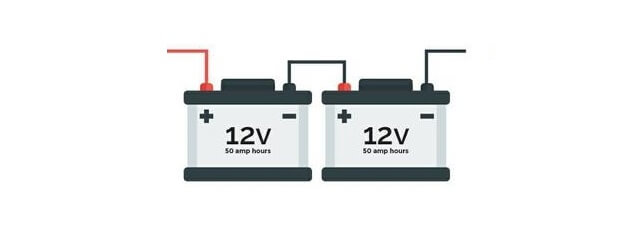
When it comes to solar power systems, the wiring is finished once all the batteries are hooked up. The leftover positive and negative ends of the battery pack are repurposed as the power source's positive and negative output terminals, respectively.
Batteries in a parallel configuration have their positive terminals connected together, and their negative terminals connected together. When the batteries' currents are combined together, the overall voltage stays the same. If two 2-amp batteries are linked in parallel, the resulting current capacity is 4 amps.
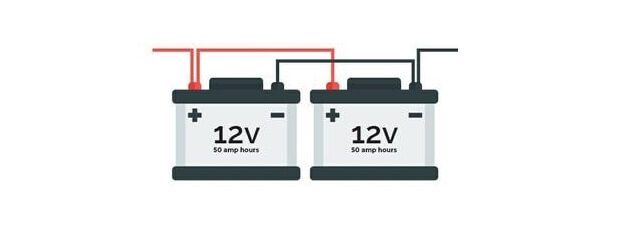
Parallel battery connection in solar power systems is achieved by joining the positive and negative terminals of each battery pack. Then, the battery bank's remaining connections are used for the output's positive and negative poles.
The voltage output can be increased by connecting batteries in series, although this method is not without its drawbacks.
Advantages:
When we need to provide electricity to an appliance that requires a higher voltage, connecting batteries in series is a beneficial solution.
Connecting batteries in series can boost system efficiency by dispersing the load across the batteries and minimising stress on individual batteries.
When batteries are connected in series, the system's energy storage capacity increases. This can be helpful in situations where you need to keep gadgets powered for long periods of time, such as in off-the-grid locations.
In comparison to parallel connections, the cost of wiring for batteries connected in series is lower since the installation process is simpler.
Disadvantages:
Overcharging or undercharging a single battery in a series configuration can shorten its service life and degrade the system's performance.
Battery equalisers and similar external devices are typically needed to achieve a state of charge and discharge equilibrium.
The lifespan of batteries can be shortened by connecting them in series. Since battery discharge rates vary, certain cells may drain faster than others and eventually die before the others.
When batteries are connected in series, the failure of any one battery can result in the complete shutdown of the system. This can be a major issue in emergency scenarios where constant electricity is required.
Adding complexity to the system, connecting batteries in series calls for more wiring and parts. This complicates setup and upkeep, which is a pain.
Advantages:
When used to power equipment with high power requirements, the system's overall power output can be increased by connecting batteries in parallel.
If one battery in a parallel arrangement fails, the system will keep running on the other batteries. That is to say, the potential for system failure is diminished.
Batteries with a parallel connection share the same voltage. As a result, the possibility of overcharging or undercharging a single battery is diminished.
Disadvantages:
When compared to connecting batteries in series, parallel connection does not boost the system's energy storage capacity.
Due to potential inconsistencies in voltage and current output, system efficiency can drop when multiple batteries are linked in parallel.
Adding the cost of additional wire and components to connect batteries in parallel.
A thermal runaway condition can occur and cause harm to the batteries and the system if one battery in a parallel connection overheats, causing the others to overheat as well.
Connecting many batteries of the same type in series is always a good idea. It is preferable to avoid situations in which one battery is overworked relative to the other. Always connect batteries of the same type in series and parallel. As long as their capacity ratings are the same, batteries of varying voltages can be wired in series.
However, other factors, like as temperature, affect battery performance, so slow your horse!
NOTE:
The positive (+) and negative (-) battery connectors should never be wired together. A short circuit could be created, which would be bad for the batteries and you.
Use high-capacity cables during wiring to prevent the possibility of a short circuit and subsequent explosion.
Take note of battery polarity. Until then, wiring is impossible.
Batteries, whether lead-acid or lithium-ion, should always have compatible chemistries when wired in series to prevent dangerous explosions.
Before installing a battery bank, make sure you know the exact power and capacity requirements of your equipment.
The positive terminal of one battery is connected to the negative terminal of another battery when they are connected in series.
Here are a few steps to connect batteries in series:
Make sure all the batteries have the same voltage and type. Connecting batteries with different voltages or chemicals in series could damage the batteries or the equipment.
Batteries can be heavy, so put them in a safe place where they won't move or fall over.
A "+" sign is usually put on the positive terminal, and a "-" sign is usually put on the negative terminal. So, figure out which ends are good and which are negative.
Use a jumper cable or wire to connect the positive terminal of the first battery to the negative terminal of the second battery. Make sure that the connection is safe.
Repeat the process for the other batteries by connecting the positive end of the second battery to the negative end of the third battery, and so on, until all the batteries are connected in series.
Check the links by double-checking each one to make sure it's tight and the polarity is right.
The batteries are now linked in series, and the higher voltage output can be used to power equipment that needs it.
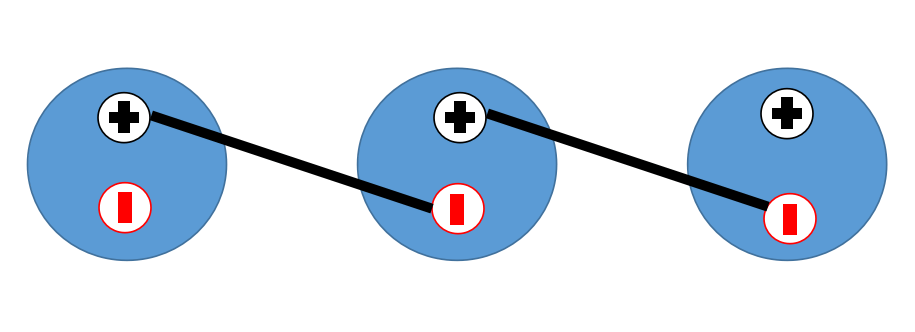
The steps for installing cells in parallel are the same as for installing them in series, except for the ones below.
Use a battery wire to connect the positive end of one battery to the positive end of the other battery.
Use another battery wire to connect the negative end of one battery to the negative end of the other battery.
Do this again for each battery you want to join in parallel.
Connect the positive and negative ends of the batteries that are linked in parallel to the positive and negative ends of the solar charge controller or inverter.
Note: Before trying to connect solar batteries in series or parallel, you should talk to an electrician or solar installer to make sure the job is done right and safety steps are taken.
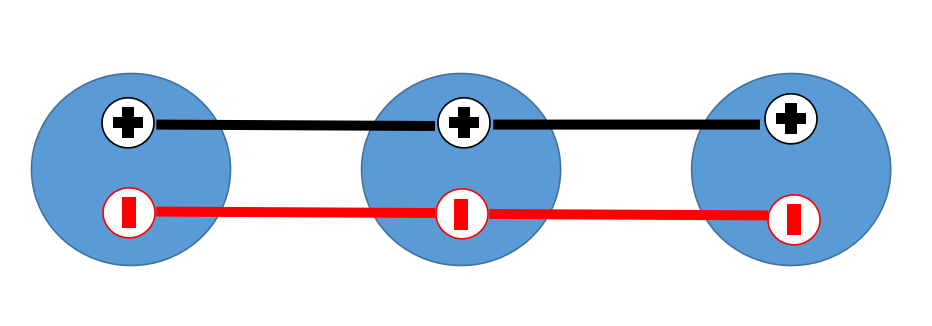
The maximum number of batteries that can be connected in series is determined by the individual battery voltages and the total system voltage required.
But you can only connect so many batteries in series at once. If the voltage is allowed to rise above this safe threshold, the device or system could be damaged.
There shouldn't be more than four 12V lithium batteries linked in series. Remember that serial connection of lithium batteries with a battery management system (BMS) is prohibited.
However, lead acid batteries can be connected in series indefinitely within the voltage range of the charge controller or inverter. Check that the voltage output of the charge controller or inverter is suitable for the battery bank voltage.
Several parameters, such as the type of batteries, their capacity, and the needs of the application, determine the maximum number of solar batteries that can be linked in parallel. Up to eight solar batteries, including lithium and lead acid varieties, can be wired in parallel.
Too many batteries wired in parallel can cause a variety of issues, including unequal charging and discharging rates, an increased danger of overloading, and a decreased lifespan for the battery bank as a whole. As a result, you should talk to an expert engineer or electrician about creating the best battery system for your needs.
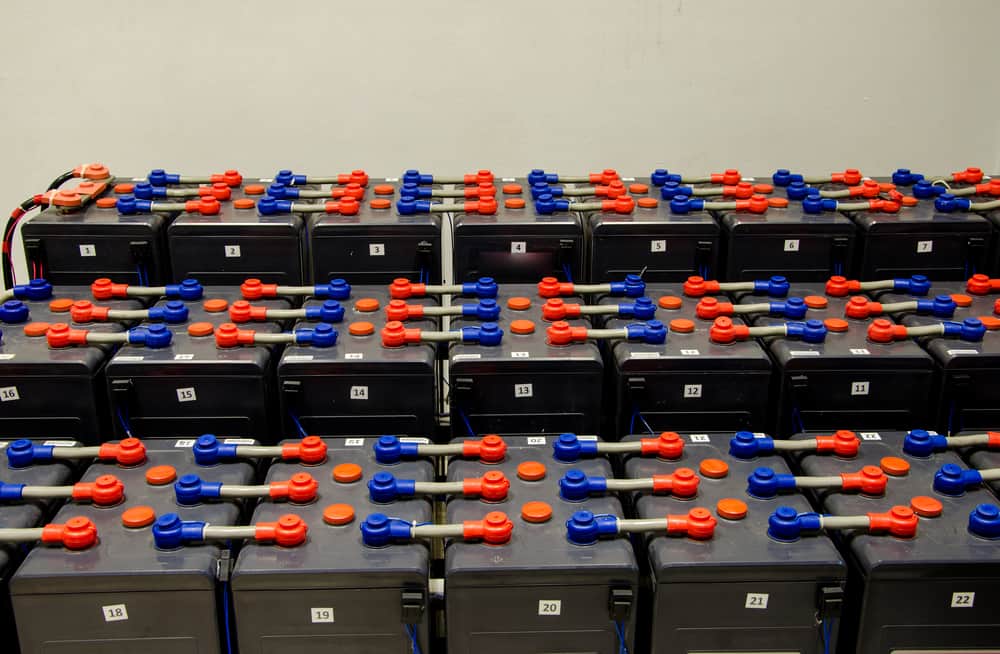
Although larger battery banks often have greater initial costs and require more maintenance, they can offer uninterrupted power for longer and be more cost-effective in the long term. Therefore, you should think about the battery bank's total capacity and make sure it's enough.
Yes, you can connect batteries both in series and in parallel at the same time. A series-parallel battery arrangement is a way to connect batteries both in series and in parallel. These kinds of type pairings are used to boost both the voltage and the capacity of the battery system, depending on what is needed.
Batteries connected in series or parallel can be charged in the same manner, provided the suitable voltage charger is used. To charge batteries in series, connect the positive cable to the first battery's positive terminal and the negative cable to the final battery's negative terminal. Consistent charging throughout a parallel bank requires connecting the positive terminal to the first battery and the negative terminal to the last battery.
Charging times for both series and parallel battery banks can be reduced by using a multi-bank battery charger. When in doubt about how to charge your batteries, check with the manufacturer.
In order to create a larger battery bank with higher power and voltage, it is possible to link batteries in both series and parallel. The voltage and capacity of a battery pack are tailored to the specifics of an application through careful assembly.
To make a link between series and parallel, First, pairs of batteries are wired in parallel to improve the battery bank's total capacity. The positive ends of each battery are hooked to each other, and the same is true for the negative ends. How many batteries are connected in parallel relies on how much power the application needs. Each pair of batteries that are connected in parallel will be thought of as a group.
Then, connect each group of batteries in parallel to get the right voltage. To do this, the positive end of the first parallel string is connected to the negative end of the second parallel string, and so on, until the voltage needed is reached. The battery bank is connected to the load using the end positive and negative terminals.
For example, if you have four 12V batteries that can hold 100Ah each. To make a 48-volt battery bank with more power, connect the four batteries in parallel to make a bank with a total capacity of 400 Ampere hours. Then, connect two of these parallel strings together to get a total of 48 Volts.
In a series-parallel setup, it's important to make sure that all the batteries are the same type, have the same capacity and voltage, and are properly balanced to keep individual cells from being overcharged or discharged.
Notice that the first step is usually to connect the batteries in a series, and the second step is to connect the batteries in parallel. It can work either way. But series connections are safer than parallel connections.

The life of batteries in either configuration relies on several things, such as the quality of the batteries, the type of chemistry used, the depth of discharge, and the charging and discharging rates. So, to make sure the battery lasts as long as possible, it's important to choose the right configuration for your programme and follow the right maintenance steps.
But the number of times a battery can be charged and discharged will go up if you connect them in parallel because the amps will be increased.
However, the voltage and current of a battery bank will change depending on whether or not the batteries are connected in series or parallel.
Battery voltage may be increased by connecting cells in series, while battery current can be increased by connecting cells in parallel. Both the voltage and the ampere-hour ratings (capacity) of the components in the series or parallel configuration contribute to the total power output of the circuit.
To meet demanding voltage and current needs, it may be necessary to connect multiple batteries in series and parallel.
Keep in mind that batteries have a certain capacity for power that is based on their specific chemistry, physical size, and other considerations. To get the best results, your battery and its settings should be well-suited to your application.
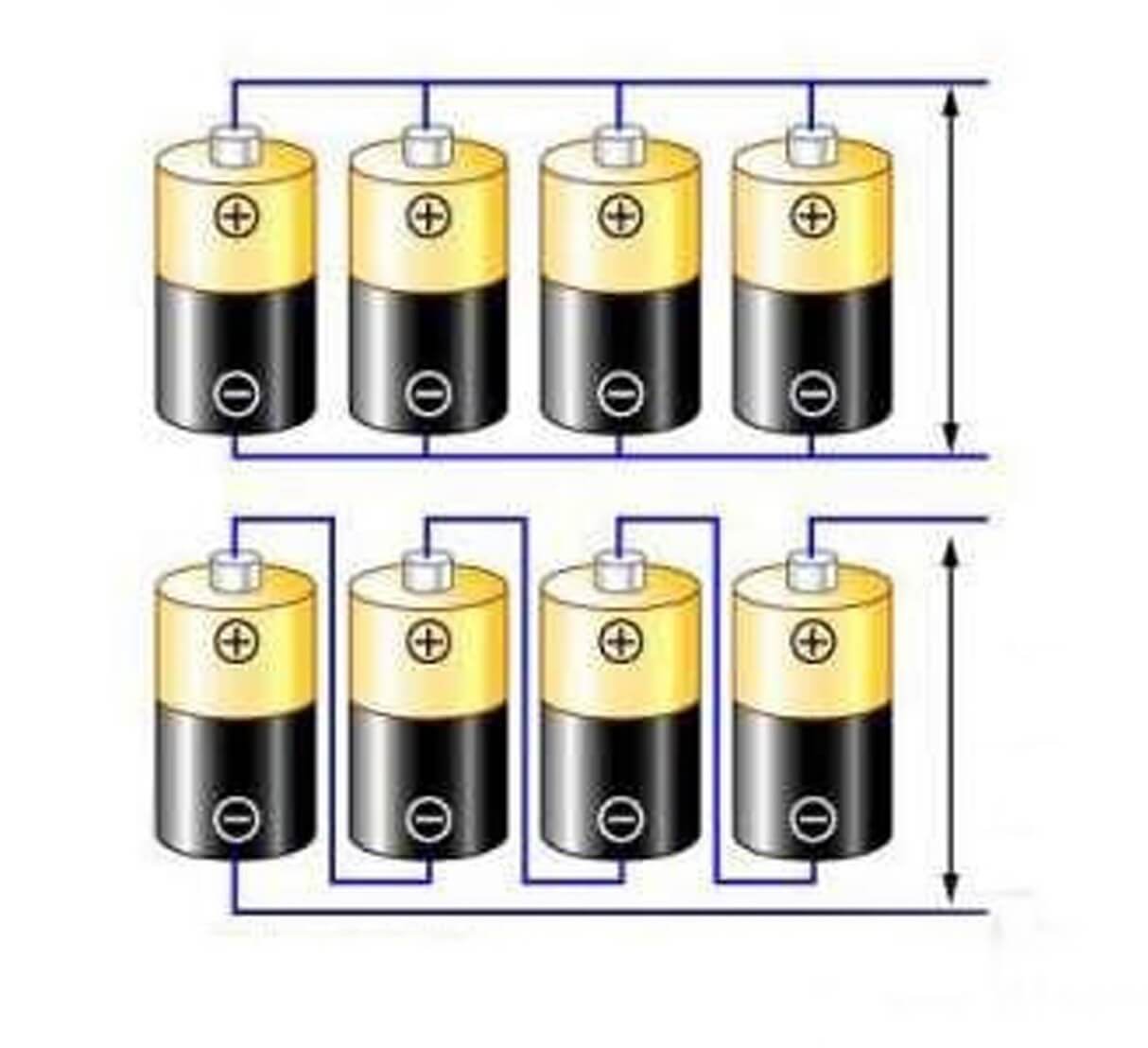
If you need more power from your battery setup, you can simply add more batteries in parallel.
Connecting multiple batteries in parallel increases the overall ampere hours but keeps the total voltage at the level of a single battery. This setup is frequently employed in electric vehicles and solar power systems due to their need for sustained high current production.
With multiple batteries connected in parallel, electricity can be guaranteed even if one goes dead or loses its charge. This is especially crucial in backup power systems for institutions like hospitals and data centres, where a power outage could have grave effects.
The total voltage of a battery system doubles to 24 volts when two 12-volt batteries are connected in series.
Connecting batteries in series raises the system voltage but has no effect on the battery capacity. For many uses, the maximum voltage can only be achieved by connecting multiple batteries in series. Battery banks with greater voltages are commonly used to power the motors of electric automobiles, boats, and recreational vehicles.
When batteries are connected in series, the total amp-hour capacity of the battery bank increases. However, if the batteries' internal resistance rises, the battery bank's maximum discharge rate and its overall efficiency may suffer.
There are a lot of problems that can arise from batteries being connected incorrectly, including lower performance and efficiency and even danger.
Some of the potential results of faulty battery connections include:
If the batteries in a battery system are not balanced, one or more of them may drain more quickly than the others, lowering the system's overall capacity.
Bad connections increase battery temperature, which can shorten a battery's life by damaging its internal components.
It is possible to cause serious damage to the batteries and other devices, or even start a fire, by connecting the terminals incorrectly.
Inadequate connections can reduce battery system efficiency and speed up discharge by causing voltage dips and increased resistance.
There is a danger of electric shock, fire, or explosion if the batteries are not connected properly, especially in applications demanding high current or voltage levels.
Check the battery bank frequently to ensure all connections are secure and in excellent condition, and always connect batteries according to the manufacturer's instructions and with the correct cables and connectors.
Because of their unique properties, which might affect the overall performance and safety of the battery bank, it is not suggested to wire different types of batteries in parallel.
While lead acid batteries can only be discharged to a certain extent (about 50%), lithium batteries can discharge all the way to zero. The batteries can be severely harmed if they are connected together. Explosions and fires are possible in the worst-case scenarios.
When two batteries with different amp-hour ratings are connected in parallel, the result can be an unbalanced flow of current and voltage between the batteries. Therefore, a battery with a higher capacity discharges at a slower rate than one with a lesser capacity. This can lead to a number of issues, including diminished performance, shortened battery life, and even safety risks.
There must be careful consideration of the characteristics of each battery, the use of appropriate balancing and monitoring systems, and the guarantee that the batteries are matched in terms of voltage (differences within 0.1 V), capacity, and internal resistance if parallel wiring is required. Use batteries of the same age (within a range of three to six months), manufacturer, and kind wherever possible.

扫码关注
We use cookies to understand how our audience uses our site.
Renon Power websites use cookies to deliver and improve the website experience. See our cookie policy for further details on how we use cookies. Privacy Policy